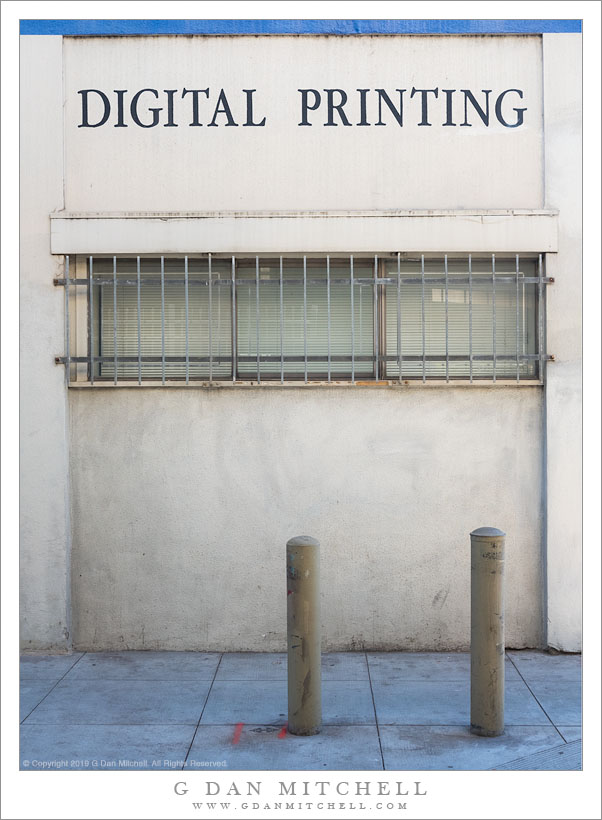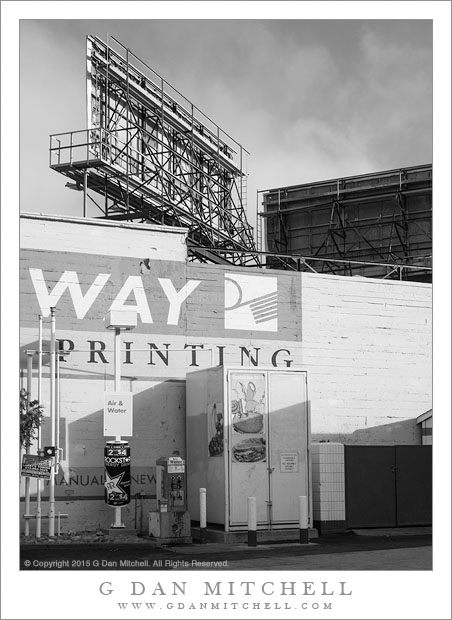
Digital Printing. © Copyright 2019 G Dan Mitchell – all rights reserved.
Wall and sidewalk of a building advertising “digital printing.”
Sometimes I wonder what people must think if they happen to notice me making street photographs. Take this image for example. I was walking with some sense of purpose back towards the 4th and Townsend Caltrain station, where I would pick up a train heading back down the peninsula following a morning of photography in San Francisco. In a location where most people are similarly focused on getting from point A to point B, usually with heads down, I suddenly stopped, stepped off the sidewalk… and photographed the wall of a nondescript building.
This photograph may be the urban equivalent of the “intimate landscape” image — I certainly think of photographs like this as being landscapes, and this one zeroes in on a very small area of a subject that folks overlook. Being a photographer who prints digitally, the “digital printing” sign had caught my eye when I passed by here a few hours earlier. Now I saw the soft light on the scene, the weathered quality of the wall, the geometry of the subject, and the relationship between the blue bar at the top and the blue quality of the light on the sidewalk.
G Dan Mitchell is a California photographer and visual opportunist. His book, “California’s Fall Color: A Photographer’s Guide to Autumn in the Sierra” is available from Heyday Books and Amazon.
Blog | About | Flickr | Facebook | Email
Links to Articles, Sales and Licensing, my Sierra Nevada Fall Color book, Contact Information.
All media © Copyright G Dan Mitchell and others as indicated. Any use requires advance permission from G Dan Mitchell.


